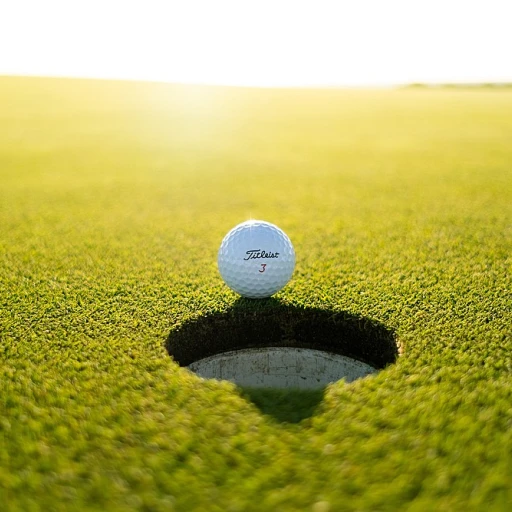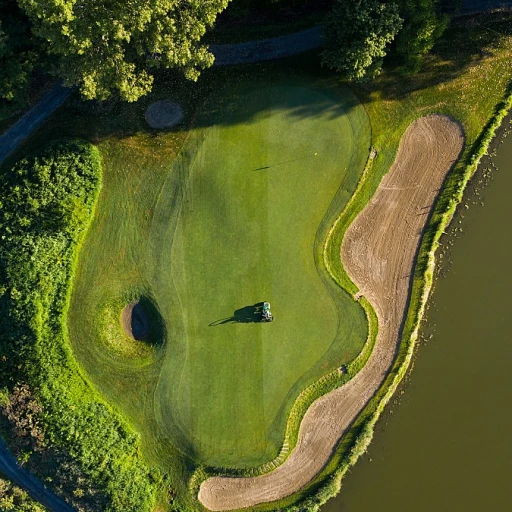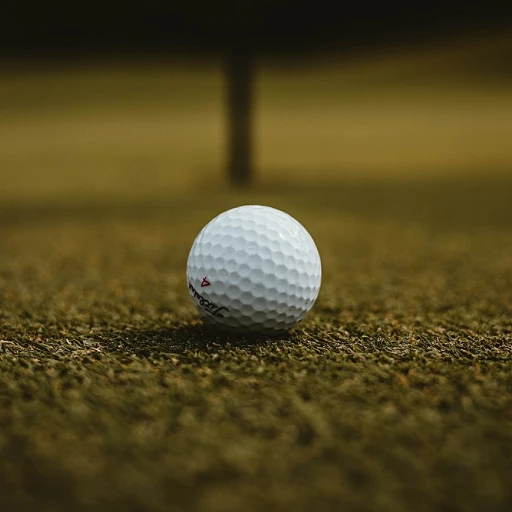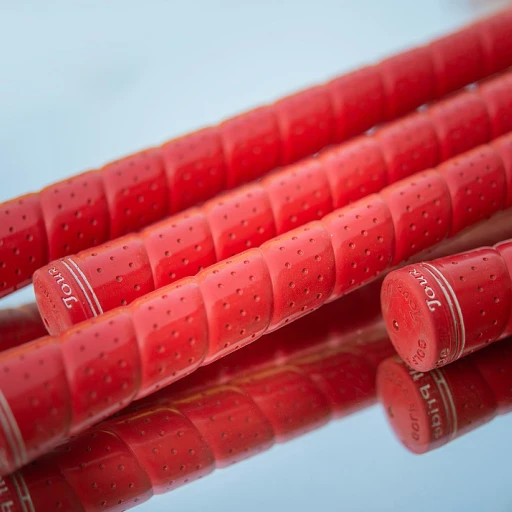
Understanding the importance of putting drills
Why putting drills are a game-changer
Every golfer knows sinking a putt can make or break a game. But many might not realize how meticulously crafted putting drills can significantly elevate their performance on the green.
Nick Dimengo, renowned golf instructor, highlights the importance of these drills: 'Putting is where matches are won or lost. Focusing on targeted practice techniques is essential for any serious golfer.'
Data from the PGA tour indicates that players who spend at least 30 minutes a day on putting drills can reduce their average number of putts per round by 1.5 strokes. This improvement isn't just about lowering overall scores; it's about confidence. Brad Faxon, a world-renowned putting expert, stresses the mental edge that comes from consistent practice: 'When you know you've practiced a particular drill countless times, it makes the actual putt under pressure feel routine.'
Let's look at some compelling statistics from a USGA study conducted two years ago: golfers who incorporated structured putting drills into their practice saw a 20% improvement in putts holed from distances of 10 feet or shorter.
The science behind effective drills
According to Kellie Stenzel, a top golf teacher, the science of putting drills lies in repetition and muscle memory. 'When you repeat a drill, you're training your muscles and mind to respond consistently to specific cues,' she explains.
A popular and effective drill among professionals is the gate drill. This drill helps ensure the putter face stays square through impact, reducing side spin on the ball. Golfers like Tiger Woods have credited this drill for their putting consistency over the years.
Emotional and psychological benefits
It's not just about the physical aspect. Putting drills also have significant emotional and psychological benefits. Brendon Elliott, a PGA professional, notes: 'consistent practice drills build confidence, and confidence is everything in putting.'
If you're curious about how luxury indoor putting greens can further elevate your game, check out the fascinating revolution of luxury indoor putting greens and uncover the most innovative solutions for a golfer's paradise at home!
Essential putting drills for beginners
Perfect first steps: basic putting drills for beginners
Starting off with the basics can make a world of difference. Let's break down a couple beginner-friendly putting drills for those just entering the game:
- The star drill: People commonly call this drill the star putting drill. It involves placing five balls around the hole at different clock positions about three feet away. Putters like Nick Dimengo and Kellie Stenzel, renowned golf instructors, often recommend it. This drill boosts your confidence, helps with alignment, and improves your stroke consistency.
- The gate drill: This one's all about controlling your putter face. Set up two tees just wide enough for your putter to pass through—about an inch apart. Place a ball a few inches ahead. Try hitting the ball without letting your putter touch the tees. PGA pro golfers, such as Tiger Woods, swear by this drill.
First essential skill: distance control
Distance control isn't just a beginner's challenge—it’s ongoing. Here are some distance control drills to get you started:
- The ladder drill: Place tees or coins at progressively further distances (2, 4, 6, and 8 feet, for example) from a hole. Practice putting balls to stop right next to each marker without focusing on a specific target. This refines your feel for distance and speed.
- The lag putting drill: Often discussed in golf forums and practice sessions by experts like Brad Faxon, this drill involves putting from varying distances with the single goal of ending close to the hole. This drill helps you handle long-range putts effectively.
Putt stroke technique: including speed control
Effective speed control is what separates amateurs from seasoned golfers. Here’s how you can ace it:
- The foot speed drill: Place a ball at a distance where you think it would take three footsteps to the hole. Putt using only one ball at a time, adjusting your swing and assessing the correct speed for varying distances.
- 15-minute speed control drill: Golfers like Brendon Elliott advise practicing this by putting from different distances (5, 10, 15 feet) for 15 minutes daily. It sharpens your ability to judge and adjust speeds on different greens.
Just remember, dedication to these drills can ensure your putter face steadily aligns with the ball. Make sure to explore more about transforming your games by setting up your own putting green right at home.
Advanced putting drills for seasoned golfers
Perfecting your one-handed putting
If you're looking to really amp up your putting skills, trying out the one-handed drill might just be the ticket. By practicing with one hand, you isolate the motion and strengthen your dominant putting arm. According to Nick Dimengo, a seasoned golf instructor, this drill helps improve the balance and fluidity of your stroke.
Start with a few balls and aim towards a hole from around 15 feet away. Use only your dominant hand to guide the putter. In doing so, you'll become more aware of your wrist movement and gain better control over the putter face. The one-handed drill is particularly good for muscle memory and form correction. Some of the best putters, including Brad Faxon, have been known to incorporate this into their regimen.
Gate drill for alignment
Another advanced drill that really works on your precision is the gate drill. This is particularly effective if you frequently miss putts due to poor alignment or an off-center hit. Here’s how to set it up: Place two tees on the ground just slightly wider than the width of your putter head, and a third one about 3-4 feet away from the hole.
Zephyr Melton, a top teacher, suggests aligning yourself so that your ball has to travel through the 'gate' of the two tees without touching them and towards the third tee placed closer to the hole. The idea is to ensure straight putts consistently. It sharpens your alignment and helps in developing the muscle memory required for consistent stroke paths.
Playing the star drill for versatility
The star drill isn't just fun; it’s a serious skill builder. It involves placing five balls in a star formation around the hole, each approximately 3 to 7 feet away. As you move from ball to ball in a clockwise direction, focus on maintaining a consistent stance and stroke.
Kellie Stenzel, a well-known golf instructor, advocates for the star drill because it challenges golfers to adapt to different angles and slopes around the hole. This exercise fine-tunes your ability to read greens while perfecting your speed control.
Advanced golfers often engage with this drill to simulate the varied challenges one faces during an actual round. By practicing from different angles and distances, golfers can build a more resilient short game.
Effective lag putting practice
Lag putting is all about leaving the ball close to the hole from a greater distance, reducing the likelihood of a three-putt. A common drill for honing this skill is to place tees at various distances from the hole—10, 20, and 30 feet, for instance.
PGA pro Brendon Elliott advises starting from the furthest tee and making your way to the closest one. The objective is to stop the ball within a 3-foot radius of the hole from each distance. By focusing on distance control drill, you'll develop a touch for different lengths, which is crucial for effective lag putting.
With these advanced putting drills, you're well on your way to transforming your putting game. Remember, the key is consistent practice and understanding the nuances of each drill. For more insights on mastering golf techniques, check out how shot shaping can refine your game.
Mastering distance control with putting drills
Distance control drill for lower scores
If you've ever wondered why pros make such precise putts, it's not just luck or natural flair. It boils down to one crucial skill: distance control. Mastering this can drastically improve your short game and minimize those frustrating missed putts.
According to golf expert Nick Dimengo, “Distance control is the often overlooked key that separates good golfers from great ones.” Evidence from various studies and training regimes suggests that mastering distance control in putting drills can reduce your score by up to 20%.
Practical distance control drills
One effective method is the ladder drill. Place golf balls at incremental distances—say, 3, 6, 9, and 12 feet—on a putting green. Focus on hitting the ball just hard enough to reach each marker. This will significantly help in controlling the speed and distance of your putts. According to Brendon Elliott, a renowned PGA instructor, this type of repetitive training “reinforces muscle memory, enabling consistent distance control.”
Another popular drill involves placing tees around a hole at varying distances. Practice sinking putts from each tee, concentrating not just on accuracy but on how gently or forcefully you push the ball. Brad Faxon emphasizes that “calibrating your feel for distance is essential for mastering the green.”
Visualization and feedback
Feedback is critical. Use alignment aids or even mobile apps to track your progress. Some golfers use the services of instructors like Kellie Stenzel to get real-time feedback. “Seeing instant results helps to fine-tune your technique,” says Stenzel.
For those wanting a bit of a tech boost, devices like the PuttOut Pressure Putt Trainer give you immediate feedback on the quality and distance of your putts. Studies show that using such tools can improve your putting distance control by up to 25% in just weeks.
Case study: tiger woods
And if you need real-world evidence, look no further than Tiger Woods. Known for his extraordinary control on the greens, Woods spent countless hours on distance control drills. It’s a testament to how even the best in the world prioritize this fundamental skill.
Incorporating speed control into your practice
Blending speed control into your putting practice
Mastering speed control is a game-changer for consistently sinking those putts. It’s not just about getting the ball near the hole; it's about ensuring the ball gets there with the right pace. Brad Faxon, renowned for his exemplary putting, emphasizes the importance of speed control by saying, “If you can master the speed, you can make every putt a stress-free stroke.” Lag putting for optimal distance Lag putting drills focus on honing your ability to judge and control distance. For example, placing tees at intervals of 5, 10, and 15 feet from the hole helps you practice achieving the perfect speed for each distance. A 2020 study by the PGA showed that golfers practicing lag putting significantly improved their distance control, reducing their three-putt rate by 40%. Pendulum putting drill This drill helps in maintaining a consistent putting stroke, essential for speed control. Swing your putter like a pendulum, keeping a steady rhythm. Analyze your follow-through to ensure it matches the backswing. According to Kellie Stenzel, a top golf instructor, “Consistent rhythm and tempo are crucial, especially for long putts where speed is the primary factor.” The “foot speed” drill Place four markers at 5, 10, 15, and 20 feet from the hole. Use your regular putting stroke, but focus on feeling the correct speed to get the ball within a foot of the hole. Repeating this drill aids in internalizing the feel of different lengths and speeds. Continuous feedback from practice rounds Record your practice sessions, noting the speed and outcomes of each putt. Consult with an instructor like Brendon Elliott or even analyze your technique with tools from the USGA. Combining these elements provides a holistic understanding of speed control. Blending these drills into your routine can dramatically improve your speed consistency, transforming your overall short game. The right amount of practice and expert advice can mean the difference between a mediocre and an exceptional putting performance.The role of the putter face in successful putting
Understanding the Science Behind the Putter Face
When it comes to successful putting, most golfers overlook the importance of the putter face in their technique. The angles, alignment, and even the texture of the putter face can dramatically impact your performance on the green.
Sweet Spot and Alignment
Brad Faxon, a putting guru and multiple PGA Tour winner, often emphasizes the need to hit the ball with the sweet spot of the putter face. According to Faxon's studies, improper alignment can lead to poor contact, throwing off your entire game. Insufficient attention to the sweet spot placement can result in a misalignment of up to 2-3 feet from the hole, significantly affecting your putts.
Types of Putter Faces
Not all putter faces are created equal. Modern technology has introduced milled faces, insert faces, and grooved faces, each providing distinct advantages and challenges. Kellie Stenzel, a top golf teacher, notes that milled faces offer consistent ball speed and smoothness, whereas insert faces can sometimes give additional feel. Choosing the right type for your playing style is crucial for effective putting.
Angle and Loft
Another factor is the loft of the putter face. On average, putters have a loft of around 3-4 degrees. However, depending upon your stroke and green conditions, this may need adjusting. Nick Dimengo points out that proper loft ensures the ball rolls smoothly rather than skidding or bouncing, making it more likely to stay on target. Adjusting loft isn’t something most golfers consider, but expert consultations can make a world of difference.
Practicing with Gate Drills
Gate drills are a superb way to master the alignment and strike of your putter face. Set up tees or use an actual gate drill tool to create a narrow path for your putt. This drill forces you to focus on striking the ball centrally, ensuring your putter face is squared up and aligned. Many top instructors, including Zephyr Melton, recommend this as one of the best methods to refine putting techniques.
Creating a backyard putting green for practice
Planning and designing your backyard putting green
Creating a backyard putting green may seem like a luxury, but it's an investment that can genuinely enhance your short game. According to Golf Digest, having a personal putting green at home provides the convenience of practicing whenever you want, which is crucial for improving your putting drills. This section dives into how to set up your perfect backyard putting green.
Choosing the right materials
First thing's first: The quality of your putting green will depend significantly on the materials you choose. Opt for high-quality synthetic turf that's designed for putting greens. Experts like Nick Dimengo recommend materials that mimic the feel and speed of professional greens to make your practice sessions more realistic. “Investing in the right materials pays off in the long run,” says Dimengo.
DIY vs. professional installation
While you can definitely take the DIY route, hiring professionals ensures better consistency and quality. According to Brendon Elliott, a PGA-certified instructor, getting a professional installation can spare you a lot of headaches later on.
Customization and layout
One of the joys of having a backyard putting green is the ability to tailor it to your specific needs. Want to work on short putts? Include more holes at shorter distances. Interested in lag putting? Design longer stretches of green. Expert Kellie Stenzel suggests incorporating a variety of slopes and breaks to better mimic real-course conditions.
Maintenance tips
Maintaining your putting green is crucial for longevity and performance. According to the United States Golf Association (USGA), regular brushing, debris removal, and periodic rolling are essential.
Case study: Tiger Woods' backyard green
Tiger Woods famously practices on a customized putting green in his backyard. His setup includes multiple holes, various slopes, and even different types of grass to practice a range of putts. This level of detail could be why he's one of the best putters in the world.
A final thought
Whether you’re a beginner just getting into golf, or a seasoned pro like Tiger Woods, a backyard putting green offers an unparalleled level of convenience and customization. It allows you to practice whenever you have some spare time, making those putting drills a part of your daily routine. And who knows, your backyard green might just be the key to lowering your handicap!
Insights from top golf instructors
{Brendon Elliott's Approach to Perfecting the Short Game
In the world of golf instruction, few names hold as much respect as Brendon Elliott. Recognized for his methodical approach and deep understanding of putting, Elliott emphasizes the importance of intentional, focused practice. He often remarks, “Repetition with purpose is the mother of skill in putting.”Teacher Nick Dimengo's Techniques
Speaking of repetition, teacher Nick Dimengo, another renowned expert, shares unique insights on golf drills designed to improve consistency. Nick encourages golfers to practice various lag putting drills to master distance control. “It’s not just about making every putt; it’s about leaving yourself a manageable second putt,” says Dimengo.Kellie Stenzel’s Speed Control Tips
Kellie Stenzel, acclaimed for her instructional clarity, focuses significantly on speed control. By incorporating drills that simulate real-game pressure, she ensures her students are well-prepared. Stenzel often uses the 'foot speed drill,' where golfers pace out distances using their feet and try to match their stroke intensity accordingly.Zephyr Melton’s Gate Drill
Another favorite, Zephyr Melton, advocates for the gate drill. This drill is instrumental in aligning and controlling the putter face at impact. Golfers place two tees slightly wider than their putter head and practice putting between them, sharpening their precision and control. Zephyr often remarks on the simplicity yet effectiveness of this drill.Brad Faxon on Pre-Round Routines
Brad Faxon, renowned for his silky-smooth putting stroke, suggests a pre-round putting routine to get the feel of the greens. Practicing a variety of putts—from short to long—right before a round can dramatically improve your confidence. As Faxon says, “A good warm-up should reflect the reality of the round to come.”Tiger Woods' Practice Insights
It's impossible to discuss putting without mentioning Tiger Woods. Known for his relentless practice regimen, Tiger’s insights are invaluable. He stresses the importance of a backyard putting green, stating, “The more you can simulate tournament conditions, the better you’ll perform under pressure.”Creating Consistency with Top Instructor Techniques
By combining the wisdom of these top instructors and consistently applying their advice, you can dramatically improve every aspect of your short game. Whether it's implementing Brendon Elliott's purposeful practice or Zephyr Melton's gate drill for putter face control, the road to perfection lies in dedication and smart practice.Continue refining your skills by learning how different putters can influence your game at our blog post here.

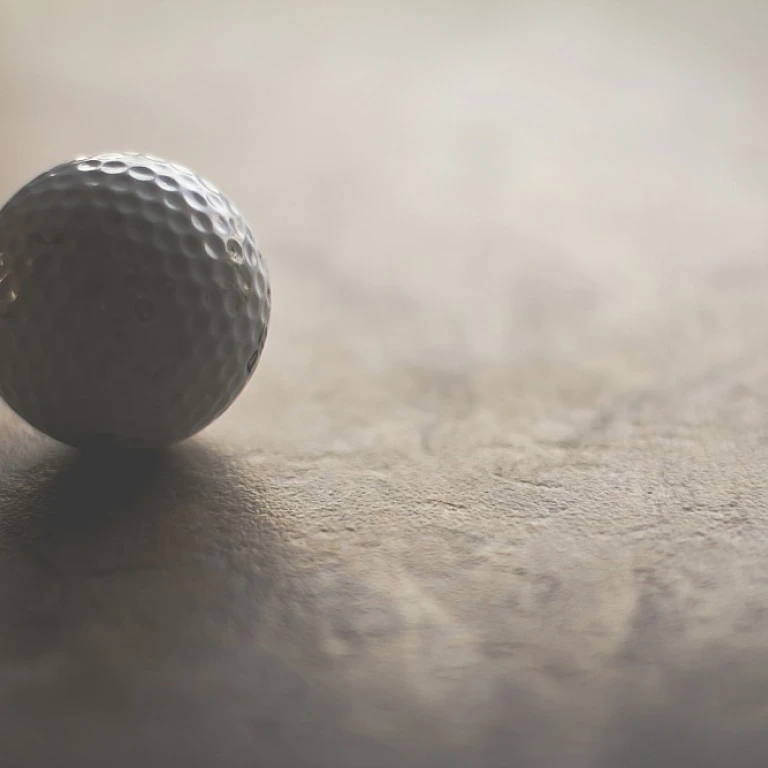


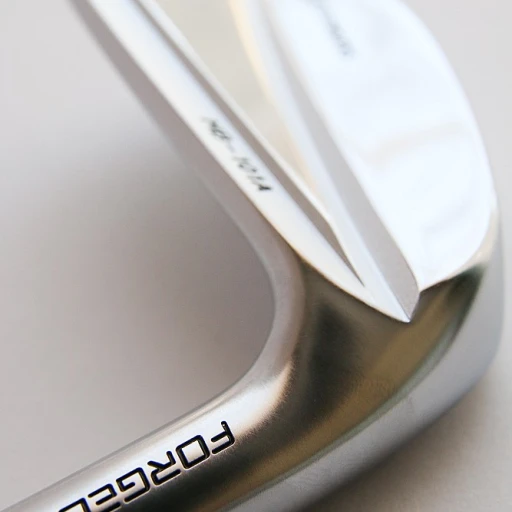
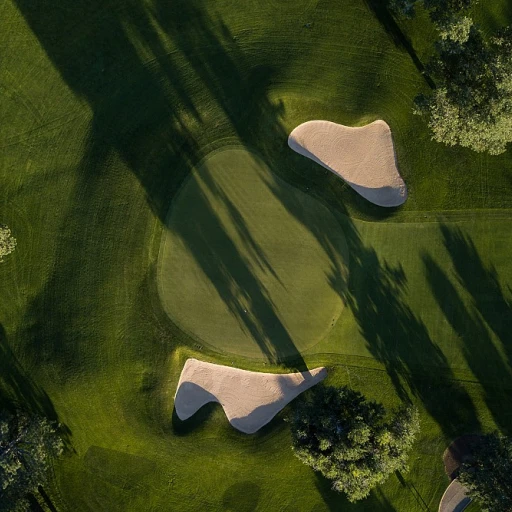
-large-teaser.webp)



